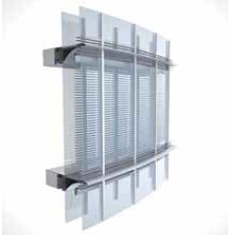The concept of the “third skin” is critical to our survival. Human skin is the first skin, our clothing is our second skin and our buildings are the third skin. By labeling our buildings as such it further describes the intimate relationship between humans and their living space.
Today, the concept of the third skin has evolved into the popular designation of the “dynamic façade.” The dynamic façade is the filter between the indoor and outdoor environments that provides protection from the elements, an exchange of ventilated fresh air, sufficient natural daylight, and a connection with the outdoors.
The intention of today’s building skin is to create a place for the occupants to live, work or learn in comfort alongwith a visual connection to the outside world. The dynamic façade is designed to filter and manipulate sunlight, regulate heat exchanges, provide ventilation and reduce energy costs.
With the advent of today’s dynamic façades, window coverings play a critical role in the success of the façade or third skin. With this need of high performance, window coverings have evolved into engineered shading solutions which are sustainable systems for interior and exterior window coverings which engage the latest technologies to control heat, glare and light.
The dynamic façade is seen among today’s most sustainable building throughout the world. One project ofparticular note is in Sydney, Australia hoven created a double glass walled façade that takes advantage of Sydney’s temperate climate. The building has a full height atrium that uses the “stack-effect” to accomplish natural ventilation. The automated windows open to allow the outside air to cool the building on warm days.
In between the double glass façade are aluminum horizontal louvers that tilt on command from the sun tracking software. Since the glass envelope protects the blinds, there is no need for them to retract for high winds. The
result is a fantastic example of the benefits of engineered shading solutions. Combining the creative applica-
tion of scientific principles to concerns such as solar heat gain, glare and light, with the myriad options avail-
able in shading systems, architects can achieve successful results in providing for the health, safety and welfare of the occupants of their designs.


